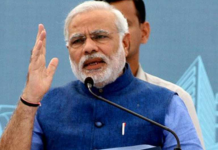As part of its attempts to control record migration, Australia announced on Wednesday that it will increase the savings required of foreign students in order to obtain a visa and alerted multiple universities to dishonest student recruitment methods.
The second hike in roughly seven months, overseas students will need to demonstrate proof of savings of at least A$29,710 ($19,576) in order to obtain their visa as of this Friday. In October, it was increased from A$21,041 to A$24,505.
The efforts come after a flurry of recent measures to tighten regulations surrounding student visas as the release of COVID-19 limits in 2022 caused a sudden surge in immigration, adding to the pressure on an already tight rental market.
In addition to raising the English language proficiency standards for student visas in March, the government has been moving to remove policies that let students stay longer.
34 school providers received warning letters for “non-genuine or exploitative recruitment practices,” according to Home Affairs Minister Clare O’Neil. If proven guilty, they might receive a two-year prison sentence and be prohibited from recruiting pupils, according to her.
There is no room for dubious providers in our global education market. According to a statement from O’Neil, “These steps will aid in eliminating the underhand operators in the industry who aim to take advantage of people and damage the industry’s reputation.”
One of Australia’s main export sectors, international education contributed A$36.4 billion ($24 billion) to the country’s GDP in 2022–2023.
However, historic migration—largely caused by foreign students—has put pressure on the government as national rental rates have skyrocketed. In the year ending September 30, 2023, net immigration increased by 60% to a record 548,800.
Over the next two years, the government anticipates that its measures may cut Australia’s immigration intake in half.
“We are in the midst of the biggest drop in migration numbers in Australia’s history, outside of war or pandemic,” O’Neil stated. “We are significantly reducing migration levels.”

































